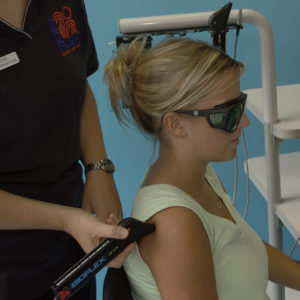The short answer to this question is yes. I’ve been treating patients with Neuropathy of their feet and hands since 2006. Typical neuropathy symptoms include numbness, tingling, and pain that is often described as burning. Traditional treatment for this condition has been pain management. People often don’t receive the relief they desire when seeking pain management for neuropathy. The details of this frustrating condition are regularly misunderstood. I’ve learned over the years that neuropathy is often associated with circulation deficiencies and nerve damage. A pain pill does nothing to improve these key causes of this condition. Also, all neuropathies are not the same. Having only one way to treat all neuropathies is likely to fail. Different types of neuropathy have a different dominant feature and require treatments to focus on this unique presentation.
I have grouped neuropathy into three different categories based on my own clinical observations. I came to this conclusion based on my initial inconsistent results with this disease. I was first provided knowledge about how to treat neuropathy when I was researching the therapeutic benefits of low level lasers. One manufacturer was touting its effectiveness with neuropathy, so I decided to give it a try. Using these specific lasers did provide positive results for some of my neuropathy patients, but nothing overwhelming. I noticed that patients who had diabetic neuropathy responded well to these lasers while the rest did not. I came to the conclusion that not all neuropathies are exactly the same and I delved into this new perspective.
When I questioned the manufacturer about the treatment goals of the lasers I was using for neuropathy, they shared the fact that these lasers focused mostly on improving circulation to the damaged area. This made sense because diabetic neuropathy is due to a lack of circulation reaching the distant tissues of the feet and hands. The increased circulation from these lasers significantly improved my patients symptoms with diabetic style neuropathy, but why didn’t it help the others enough? I decided to try my other, computerized lasers on the non-responding neuropathy cases. These lasers are more focused on healing damaged tissue than they are about circulation. To my surprise an additional group of neuropathy patients found relief with the treatments from these lasers.
I came to the realization that neuropathy is due to circulation deficiencies and nerve damage. Some neuropathy cases like the ones caused by diabetes had more circulation issues, and others had more nerve damage as the key to its resolution. We labeled the treatable types of neuropathy that endured more nerve damage as Idiopathic neuropathy. For diabetic neuropathy, we used the series of lasers that are best suited for circulation improvement, and for idiopathic neuropathy, we started using our multiple, computerized laser series with the focus on healing the damaged nerve tissue. This differentiation of clinical types of neuropathy allowed us to help most of our neuropathy cases. There is a third classification that is due to major nerve damage and we call this toxic neuropathy. This type is often due to chemotherapy, or alcoholism, or some major toxic occurrence. I don’t take these cases any more because I have not found a consistent way to treat this condition effectively.
Most of the people who suffer from neuropathy fall into the diabetic style or idiopathic style of neuropathy. We have been very good at getting relief for these patients by utilizing the specific lasers that treat the roots of their condition and by combining this treatment with other valuable and effective technologies which have continued to improve our results.
Give us a call if you have neuropathy symptoms to schedule a free consultation. During the consultation, we will determine the type of neuropathy that you have, and explain in detail how we can help you. We will only recommend treatment if we have had success with your case in the past, and if we feel we can help you.
Dr. Craig Zimmerman




